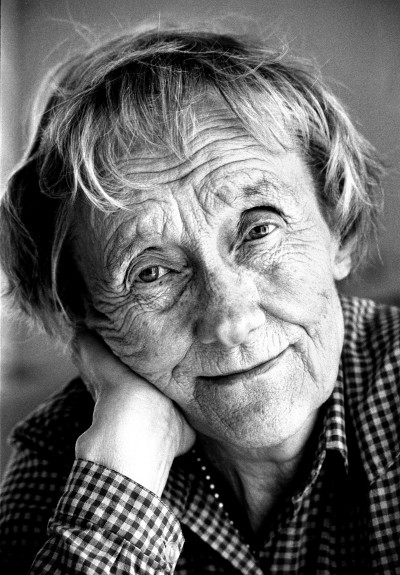Astrid Lindgren (Astrid Anna Emilia Lindgren)

Astrid Lindgren grew up in Näs, near Vimmerby, Småland, Sweden, and many of her books are based on her family and childhood memories and landscapes. Lindgren was the daughter of Samuel August Ericsson and Hanna Jonsson. She had two sisters, Stina and Ingegerd, and a brother, Gunnar Ericsson, who eventually became a member of the Swedish parliament. Upon finishing school, Lindgren took a job with a local newspaper in Vimmerby. She had a relationship with the chief editor, who eventually proposed marriage in 1926 after she became pregnant. She declined and moved to Stockholm, learning to become a typist and stenographer (she would later write most of her drafts in stenography). In due time, she gave birth to her son, Lars, in Copenhagen and left him in the care of a foster family. Although poorly paid, she saved whatever she could and travelled as often as possible to Copenhagen to be with Lars, often just over a weekend, spending most of her time on the train back and forth. Eventually, she managed to bring Lars home, leaving him in the care of her parents until she could afford to raise him in Stockholm. In 1931, she married her boss, Sture Lindgren (1898–1952). Three years later, in 1934, Lindgren gave birth to her second child, Karin, who became a translator. The character Pippi Longstocking was invented for her daughter to amuse her while she was ill and bed-ridden. Lindgren later related that Karin had suddenly said to her, “Tell me a story about Pippi Longstocking,” and the tale was created in response to that remark. The family moved in 1941 to an apartment on Dalagatan, with a view over Vasaparken, where Lindgren lived until her death in 2002, at the age of 94. Lindgren was almost blind a few years before her death.
Lindgren worked as a journalist and secretary before becoming a full-time author. She served as a secretary for the 1933 Swedish Summer Grand Prix. In 1944 Lindgren won second prize in a competition held by Rabén & Sjögren, a new publishing house, with the novel Britt-Marie lättar sitt hjärta (Britt-Marie unburdens her heart). A year later she won first prize in the same competition with the chapter book Pippi Långstrump (Pippi Longstocking), which had been rejected by Bonniers. (Rabén & Sjögren published it with illustrations by Ingrid Vang Nyman, the latter’s debut in Sweden.) Since then it has become one of the most beloved children’s books in the world and has been translated into 60 languages. While Lindgren almost immediately became a much appreciated writer, the irreverent attitude towards adult authority that is a distinguishing characteristic of many of her characters has occasionally drawn the ire of some conservatives.
The women’s magazine Damernas Värld sent Lindgren to the USA in 1948 to write short essays. Upon arrival she is said to have been upset by the discrimination against black Americans. A few years later she published the book Kati in America, a collection of short essays inspired by the trip. In 1956, the inaugural year of the Deutscher Jugendliteraturpreis, the German-language edition of Mio, min Mio (Mio, My Son) was recognised by one of six special awards. (Sixteen books written by Astrid Lindgren made the Children’s Book and Picture Book longlist, 1956–1975, but none won these main prizes.) In 1958, Lindgren received the second Hans Christian Andersen Medal for the Rasmus på luffen (Rasmus and the Vagabond), a 1956 novel developed from her screenplay filmed in 1955. The biennial International Board on Books for Young People, now considered the highest lifetime recognition available to creators of children’s books, soon came to be called the Little Nobel Prize. Prior to 1962 it cited a single book published during the preceding two years. On her 90th birthday, she was pronounced Swede of the Year by a radio show. In its entry on Scandinavian fantasy, The Encyclopedia of Fantasy named Lindgren the foremost Swedish contributor to modern children’s fantasy. Its entry on Lindgren summed up her work in glowing terms: “her niche in children’s fantasy remains both secure and exalted. Her stories and images can never be forgotten.”
Born
- November, 14, 1907
- Vimmerby, Sweden
Died
- January, 28, 2002
- Stockholm, Sweden
Cause of Death
- viral infection
Cemetery
- Vimmerby Kyrkogård
- Vimmerby, Sweden


